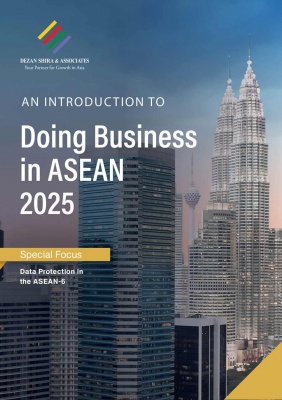
An Introduction to Doing Business in ASEAN 2025
Published: January 2025This publication is designed to introduce the fundamentals of investing in all ten ASEAN countries and includes a guide to corporate establishment, tax advisory, and bookkeeping, in addition to HR and payroll, double tax agreements, and audit and compliance.
The Association of Southeast Asian Nations (ASEAN) is emerging as one of the most dynamic regions for global investment. With a combined population of over 600 million people, a growing middle class, and projected economic growth outpacing the global average, ASEAN is poised to become the world’s fourth-largest economy by 2030. This strategic bloc, founded in 1967, continues to offer vast opportunities in sectors ranging from high-value manufacturing to digital technology.
Despite inflationary pressures and supply chain disruptions linked to the Russia-Ukraine crisis, the ASEAN-6 economies—Indonesia, Malaysia, the Philippines, Singapore, Thailand, and Vietnam—are forecast to achieve an average growth rate of 4.8 percent, outpacing the global average of 3.2 percent, according to United Overseas Bank (UOB). Vietnam leads at 6.8 percent, followed by the Philippines at 6.5 percent, Malaysia at 5.3 percent, Indonesia at 4.8 percent, Thailand at 2.9 percent, and Singapore at 2.5 percent. This growth, driven by a rising middle class and increasing consumer demand, highlights ASEAN’s economic dynamism.
ASEAN’s expanding consumer base is projected to drive domestic consumption to US$4 trillion by 2030 and has been attracting substantial Chinese outward direct investment (ODI). In 2023, Chinese ODI in ASEAN reached US$25.12 billion, a 34.7 percent increase from the previous year, accounting for 14.2 percent of China’s total ODI flows. Key beneficiaries include Singapore (US$13.1 billion), Indonesia (US$4.5 billion), Vietnam (US$3.2 billion), and Malaysia (US$2.1 billion). Chinese firms are heavily investing in manufacturing, digital technology, and infrastructure to capitalize on ASEAN’s growth and mitigate geopolitical risks.
The incoming U.S. administration in 2025 may reshape trade policies with significant implications for ASEAN. A potential resurgence of tariffs under a new Donald Trump presidency could disrupt global supply chains, prompting Chinese firms to relocate production to ASEAN markets. This strategy would protect Chinese exports while boosting ASEAN’s role as a global manufacturing hub. However, ASEAN exporters, especially in electronics, textiles, and consumer goods, could face tariffs if perceived as conduits for Chinese-made products. Vietnam’s electronics and textile exports, Malaysia’s semiconductor production, and Indonesia’s automotive parts sector may come under scrutiny. To avoid such risks, ASEAN economies must diversify export markets and strengthen regional trade agreements.
ASEAN countries can leverage several advantages in the shifting geopolitical landscape. Balanced relationships with both the U.S. and China position the region to attract steady foreign direct investment (FDI). In 2023, ASEAN recorded US$229.8 billion in FDI inflows, with Singapore (US$159.6 billion), Indonesia (US$21.6 billion), and Vietnam (US$18.5 billion) as top destinations. Strengthening regional supply chains and easing business regulations will further enhance ASEAN’s attractiveness to investors. Additionally, a robust consumer base supports domestic consumption and intra-ASEAN trade, fostering resilience against external shocks.
As ASEAN progresses towards becoming the world’s fourth-largest economy by 2030, the region presents unmatched opportunities for investors. Proactive reforms, strategic positioning, and a growing consumer class ensure ASEAN’s continued growth despite global challenges.
This publication, compiled by experts at Dezan Shira & Associates, introduces the fundamentals of investing in ASEAN and provides insights into navigating this dynamic market. Dezan Shira & Associates specializes in FDI services, including corporate establishment, business intelligence, tax advisory, compliance, accounting, and financial review services for multinationals investing in emerging Asia.
“An Introduction to Doing Business in ASEAN 2025” covers the following critical areas:
- Corporate establishment
- Tax and accounting
- Human resources and payroll
- Audit and compliance

